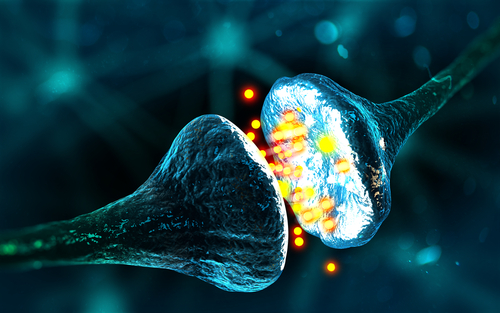Deregulation of neurotransmitters, which are important signaling molecules that activate the nervous system, may affect fibromyalgia symptoms and also may help diagnose this complex disease, recent research suggests.
This study with that finding, “Catecholamine and Indolamine Pathway: A Case–Control Study in Fibromyalgia,” was published in the journal Biological Research For Nursing.
Fibromyalgia is the second-most common rheumatic disorder, affecting 1.3 to 8 percent of the population. Characterized by widespread chronic pain, this disorder often is associated with persistent fatigue, depression, sleeping problems, and reduced strength, which can severely affect patients’ quality of life.
Despite the many efforts made to understand what causes this complex disorder, the mechanisms underlying all the symptoms remain unclear.
Studies have suggested that important signaling proteins that activate the nervous system, called catecholamines and indolamines, could take part in this process. However, so far, the studies’ results have been inconclusive or contradictory.
A Spanish research team conducted a new study to further evaluate the blood levels of some catecholamines and indolamines in 35 fibromyalgia patients compared to 12 healthy volunteers.
In the catecholamine neurotrnasmitter group they analyzed epinephrine, norepinephrine, and dopamine levels. Regarding indolamines and intermediary compounds they focused their analysis on serotonin and 5-HIAA, 5-HTP, and Nac-5-HT levels.
They found that the blood levels of epinephrine and Nac-5-HT was similar between the two groups of women, whereas the remaining molecules changed considerably. They all were reduced in fibromyalgia patients compared to healthy controls.
Further analysis revealed that higher norepinephrine blood levels were associated with worse physical health status of the patients, as determined by the physical component summary of the SF-12 survey. Also, the levels of this particular neurotransmitter were found to have diagnostic potential. Researchers found that 90 percent of individuals with norepinephrine blood levels above 694.69 pg/ml (picogram/milliliter) may be diagnosed with fibromyalgia.
Supported by these results, the team believes that norepinephrine “may be an accurate predictor” of fibromyalgia that is associated with worse physical health status, which “may greatly help in the diagnosis and treatment of this syndrome.”
Collectively, this study adds a new layer of knowledge that may help “the diagnosis, management, and treatment of patients with fibromyalgia,” the researchers stated.

